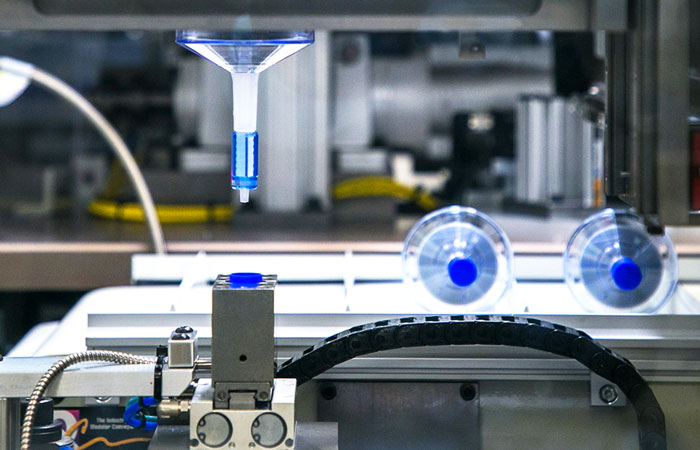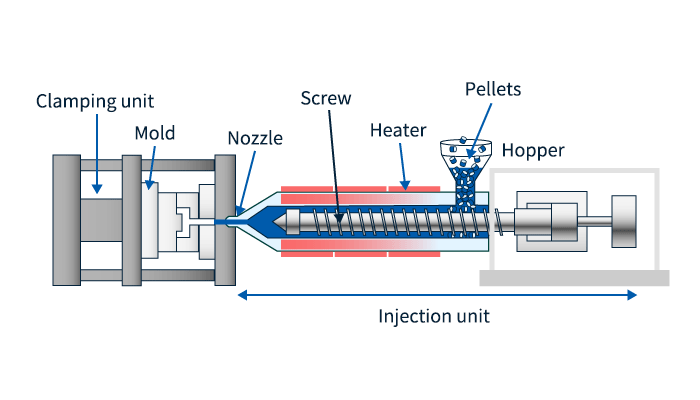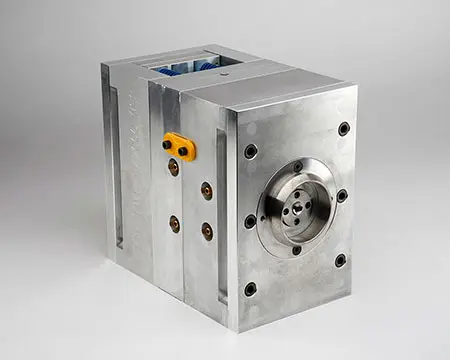The Effect of Plastic Injection Molding on Reducing Manufacturing Costs and Waste
The Effect of Plastic Injection Molding on Reducing Manufacturing Costs and Waste
Blog Article
Comprehending the Fundamentals of Plastic Injection Molding Procedures
Plastic injection molding offers as a keystone of modern manufacturing, providing a systematic method to generating complicated parts with accuracy. Exploring these necessary components could reveal exactly how even minor changes can lead to significant enhancements in manufacturing results, increasing inquiries regarding the potential for technology in this recognized process.
What Is Plastic Injection Molding?
Plastic injection molding is an extensively made use of manufacturing procedure that transforms thermosetting and thermoplastic products into exact and intricate forms. This method is preferred for its capacity to produce high volumes of identical parts with remarkable accuracy, making it an essential technique in different markets, including vehicle, customer products, and clinical tools.
The procedure includes melting the selected plastic material and infusing it into a mold under high pressure. The mold, created to the requirements of the wanted component, permits the liquified plastic to form as it strengthens and cools down. Once the product has actually set, the mold and mildew is opened, and the finished component is ejected.
Plastic injection molding uses a number of benefits, consisting of reduced waste, uniformity in production, and the capacity to include detailed designs that might be challenging with various other making techniques. Additionally, it sustains a wide variety of materials, each supplying distinct buildings that can be tailored for details applications. As industries remain to introduce, plastic injection molding continues to be at the center, allowing the development of advanced products that satisfy advancing consumer demands.
The Shot Molding Refine
The shot molding process is a sophisticated strategy that entails a number of vital stages to produce high-quality plastic components. Initially, plastic pellets are fed right into a heated barrel where they are merged a thick liquid. This molten plastic is then infused under high pressure into a precision-engineered mold and mildew, which forms the material into the wanted type.
Once the mold is filled up, the plastic is enabled to solidify and cool down, taking the shape of the mold tooth cavity. Cooling time is important, as it affects the cycle time and the final residential properties of the shaped component. After sufficient cooling, the mold and mildew opens up, and the ended up component is ejected using ejector pins.

Materials Utilized in Injection Molding
Different materials can be utilized in the shot molding process, each offering one-of-a-kind homes that deal with particular applications. The most commonly made use of materials consist of thermoplastics, thermosetting plastics, and elastomers.

Thermosetting plastics, like epoxy and phenolic materials, undergo a chemical adjustment throughout the healing process, leading to a stiff, inflexible structure. These materials are ideal for applications requiring high heat resistance and structural integrity, commonly made use of in auto components and electrical insulators.
Elastomers, consisting of silicone and rubber-based products, provide versatility and strength. Their distinct homes make them suitable for applications that demand flexibility, such as gaskets and seals.
Furthermore, specialized products like bio-based plastics and compounds are gaining traction for their ecological advantages and boosted efficiency characteristics, expanding the range of shot molding applications in numerous sectors. Recognizing the homes of these materials is vital for picking the ideal kind for specific projects.
Advantages of Injection Molding
Shot molding attracts attention as a very reliable production procedure that supplies many benefits for creating complex parts with precision. One of the most substantial advantages is the capacity to produce complex styles that would be challenging or difficult to accomplish with other methods (Plastic Injection Molding). The procedure permits for in-depth functions and tight resistances, making sure top notch elements
Additionally, shot molding is known for its quick manufacturing abilities, making it an optimal choice for high-volume production. When the mold is developed, components can be produced promptly, minimizing lead times and raising general productivity. This performance not only decreases production prices however also supplies a competitive side on the market.
The versatility of products utilized in injection molding additionally enhances its charm. A large range of thermoplastics and thermosetting polymers can be employed, enabling manufacturers to choose materials that finest fulfill their certain needs, including flexibility, stamina, and warmth resistance.
Furthermore, the procedure decreases waste, as excess material can commonly be reused and reused. This sustainability element adds to a lowered environmental effect, making shot molding a liable production choice. Generally, the advantages of shot molding make it a recommended method for numerous markets.
Variables Affecting Product High Quality
While many variables can influence product find more info quality in injection molding, understanding these aspects is vital for attaining optimal results. Key aspects include material option, refining criteria, and mold and mildew layout.
Product option plays an essential duty, as various polymers show one-of-a-kind residential or commercial properties that affect flowability, strength, and thermal stability. Inadequate product choice can bring about issues such as bending or insufficient dental filling.
Processing specifications, including stress, temperature, and cycle time, must be meticulously regulated. Variants in these settings can result in inconsistencies partly measurements and surface finish. As an example, excessively heats go to website may cause deterioration of the polymer, while poor pressure can cause brief shots.
Mold and mildew style is equally important, as it establishes the flow of the molten plastic and the cooling process. Inadequately made mold and mildews may bring about unequal cooling prices, resulting in recurring anxieties and dimensional inaccuracies.

Final Thought
In final thought, plastic shot molding serves as a vital manufacturing process that allows the efficient production of top quality elements. Mastery of the injection molding process, consisting of the understanding of materials and the influence of various variables on product top quality, is crucial for achieving ideal outcomes. The benefits of this approach, such as cost-effectiveness and style versatility, find out here additional highlight its relevance across numerous markets, strengthening its status as a recommended selection for high-volume production.
Plastic shot molding offers as a foundation of contemporary manufacturing, giving a methodical method to producing intricate elements with accuracy.Plastic injection molding provides numerous advantages, including reduced waste, consistency in production, and the capability to include intricate designs that might be challenging with various other manufacturing methods (Plastic Injection Molding). As sectors continue to introduce, plastic injection molding stays at the forefront, making it possible for the advancement of innovative items that satisfy evolving customer demands
The shot molding process is a sophisticated strategy that involves a number of essential stages to generate premium plastic parts.In final thought, plastic injection molding offers as a critical manufacturing process that enables the effective manufacturing of high-quality components.
Report this page